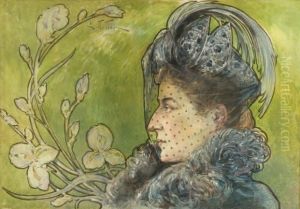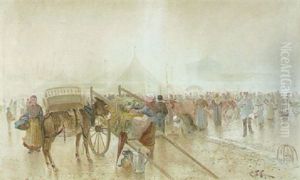Edouard Mathurin Mage Paintings
Édouard Mathurin Mage was a French sculptor born on February 21, 1826, in Marseille, France. His artistic career developed during a period in which French art experienced significant transformations, with the emergence of new art movements and the impact of political changes brought about by the events of 1848 and the establishment of the Second Empire under Napoleon III.
Mage was trained under the guidance of sculptor David d'Angers, who was known for his neoclassical style and patriotic themes. Under such influence, Mage developed a style that blended classical traditions with a sense of naturalism that was beginning to take hold in European sculpture of the time. He exhibited his works at the Paris Salon, which was the official art exhibition of the Académie des Beaux-Arts in Paris and a crucial venue for artists to gain recognition.
His sculptures often depicted allegorical figures, historical personages, and mythological subjects, which were popular themes in the 19th century. Despite the traditional themes, Mage's work hinted at the transition towards a more realistic approach to representation in sculpture. Mage's attention to detail and ability to capture human emotion in his works were notable and contributed to his acclaim as a sculptor.
Mage's career, however, was relatively short-lived. He died prematurely on April 10, 1869, in Paris, at the age of 43. Although his body of work is not extensive due to his early death, Mage left behind a legacy that reflects the artistic tendencies of his time and showcases the skills of a sculptor who was able to integrate classical training with emerging styles of his era. His works can be found in various collections and museums, serving as a testament to his artistic contributions during a vibrant period of French art history.

